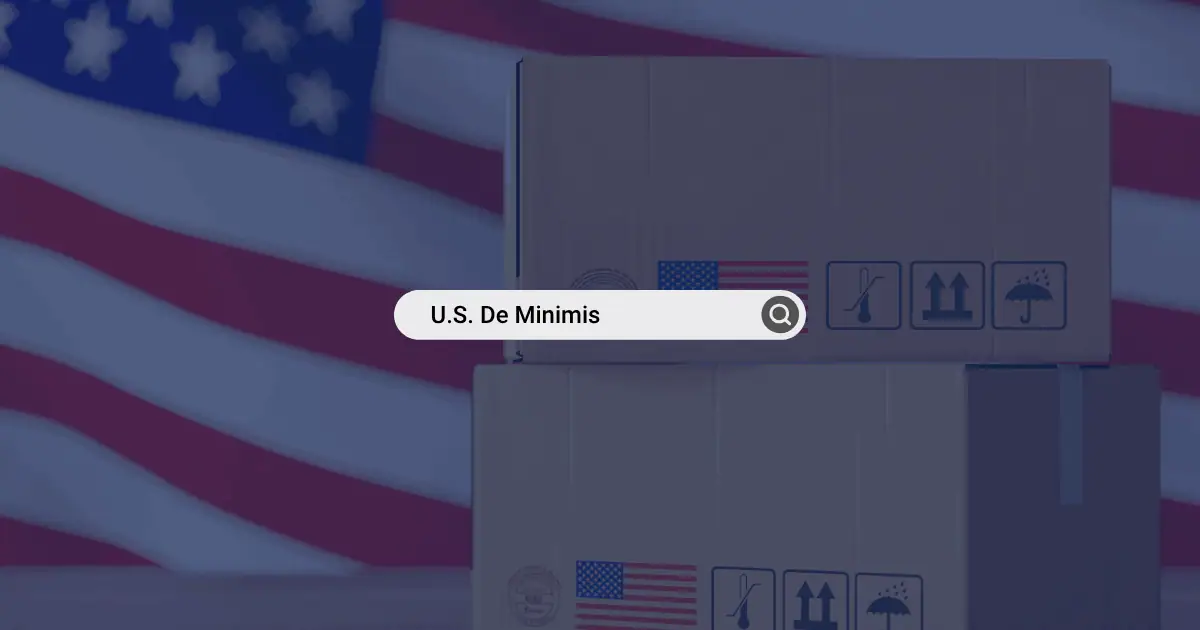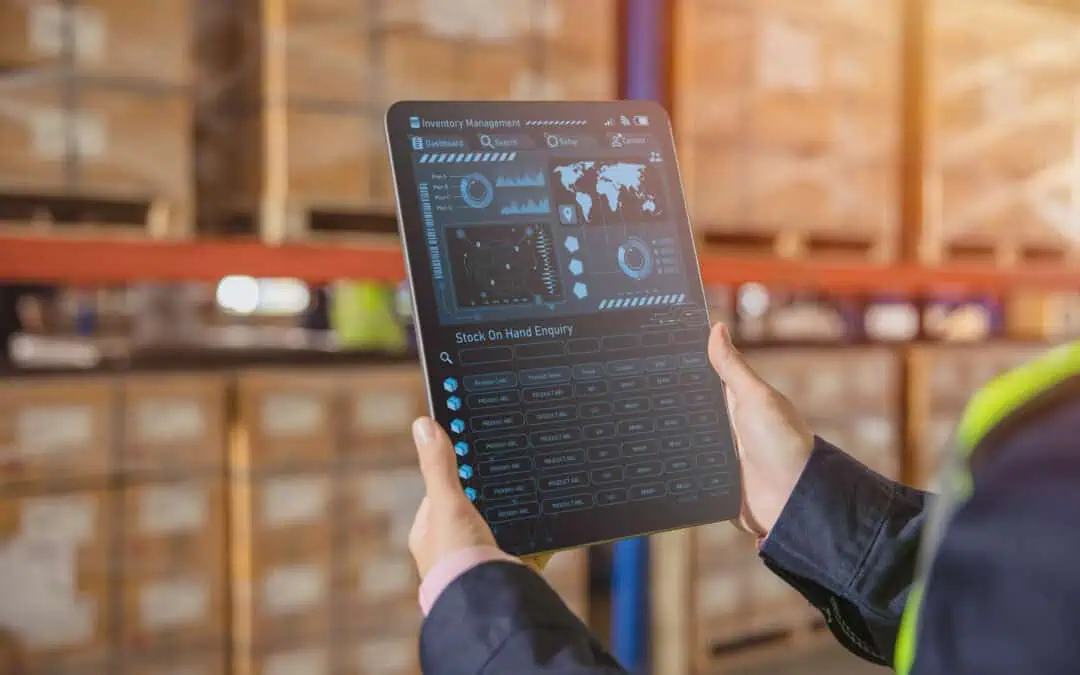On August 29, 2025, the U.S. will eliminate the de minimis exemption for all countries. For ecommerce merchants worldwide, this means the end of duty-free imports valued under $800. This shift isn’t just policy, it’s a fundamental change to ecommerce operations.
Merchants must now rethink how they ship products to U.S. consumers. De minimis has long been a cornerstone of global ecommerce, enabling affordable, rapid cross-border deliveries. Its elimination means higher costs, more complex logistics, and potentially slower shipments.
But merchants have options. Here’s what you should consider as you adapt your U.S. strategy.
Understanding the Impact
First, what exactly does the end of de minimis mean?
Currently, any shipment valued at $800 or less enters the U.S. duty-free. Note that the U.S. ended de minimis for goods made in China or Hong Kong on May 2nd of this year. Brands across apparel, cosmetics, footwear, electronics, and supplements have built their U.S. business models around this exemption. Now, all shipments—no matter the value—will face duties and customs clearance procedures.
The result? Increased costs and complexity. Every shipment must clear customs, pay duties, and comply with more extensive paperwork requirements. This affects margins, pricing, and fulfillment speed.
How Can Merchants Prepare?
1. Rethink Your Fulfillment Approach
Direct cross-border shipments under $800 were previously easy. Now, consider alternative approaches. The most strategic move for many global brands is to shift from cross-border to local fulfillment. This means:
- Importing inventory into the U.S. ahead of time
- Paying duties on cost of goods sold (COGS), instead of the retail sale price
- Fulfilling orders domestically, with faster shipping and easier returns
- Remaining fully compliant with U.S. customs and tax authorities
In-country fulfillment can also unlock:
- Wholesale and marketplace opportunities (e.g., Amazon, Target+)
- Lower shipping costs and improved NPS
- A more reliable and premium customer experience, leading to stronger brand loyalty and fewer service issues
- The ability to scale U.S. growth sustainably
There are two key approaches to the In-Country Enablement model. Whether brands prefer direct control through a Do-it-Yourself (DIY) approach or seek operational ease by outsourcing, each option requires careful consideration and alignment with business capabilities and long-term objectives.
DIY Fulfillment Infrastructure
Brands can build a domestic operation, incorporating:
- U.S. LLC formation, banking setup, and IOR registration
- Selecting and integrating with 3PL partners
- Managing customs filings, sales tax compliance, and logistics performance
- Ongoing oversight across 47 states and multiple regulatory bodies
Outsourced Fulfillment & Enablement
A comprehensive third-party solution can include:
- Bulk freight coordination and formal customs clearance
- U.S. warehouse distribution with 2–3-day shipping
- Local returns handling and refurbishment
- Merchant of Record (MOR) services covering sales tax registration and remittance
- Enablement for Amazon FBA and wholesale channels
- Documentation support and audit preparedness
Working with a third-party such as Passport and outsourcing U.S. tax obligations can significantly reduce the administrative burden for your team and help ensure compliance across both federal and state jurisdictions.
2. Evaluate Your Pricing Strategy
With duties now unavoidable, carefully analyze your pricing. Passing on the cost to consumers risks reducing demand. Absorbing costs could reduce your margins. Finding the right balance is essential.
Transparency matters here. Consumers appreciate straightforward pricing, especially in ecommerce. Consider how you’ll clearly communicate duties and taxes at checkout to prevent cart abandonment.
3. Optimize Customs Valuation
With every shipment now requiring customs clearance, correctly declaring the value of imported goods is critical. Accurate customs valuation prevents costly delays, audits, and potential penalties.
Use recognized methods like transaction value and review your calculation methods to ensure you are not including costs that should be excluded (e.g. shipping costs to the U.S.). Partnering with customs brokers or experienced logistics providers can help navigate this effectively.
4. Prepare for Regulatory Scrutiny
The end of de minimis signals stronger customs oversight. U.S. Customs and Border Protection (CBP) will likely increase enforcement efforts, focusing on accurate declarations, tariff classifications, and valuation compliance. Every shipment will require an Importer of Record (IOR) who will be legally responsible for the accuracy of customs declarations.
Avoid risky tactics like undervaluation or misclassification. Such practices not only invite costly fines but also long-term damage to your brand’s reputation.
5. Consider Duty Drawback
Duty drawback programs allow businesses to reclaim duties paid on imported goods if those goods are later exported or destroyed. Merchants who frequently re-export or redistribute inventory internationally can significantly offset new import costs through drawback.
Setting up a drawback program requires precise documentation and operational discipline. Working with specialized drawback service providers can ease the administrative burden and enhance compliance.
6. Evaluate Your Product Assortment
Not all products will remain profitable under the new duty regime. Evaluate your product mix, and consider adjusting your U.S. assortment to emphasize items with manageable duty rates or higher margins.
Strategically choosing products less impacted by tariffs could help maintain overall profitability.
7. Review Product Classifications and Explore Tariff Engineering
Review your product classifications carefully. Accurate tariff classification ensures compliance and prevents unexpected duties and penalties. Additionally, explore tariff engineering—legally modifying or redesigning products—to take advantage of favorable tariff treatments and classifications, which can significantly reduce costs. The biggest and best retailers have done this for decades, and they laid the groundwork with customs rulings that clarify what is allowed.
Real-World Lessons from China and Hong Kong
When the U.S. ended de minimis for Chinese-made goods on May 2, 2025, many brands experienced sudden disruptions. Lessons from this transition highlight the importance of advanced planning:
- Consumer Communication: Clear upfront communication on duties and potential delays prevented surprises and customer dissatisfaction.
- Inventory Management: Merchants who shifted quickly to bulk importing minimized the disruption to their U.S. sales.
- Regulatory Alignment: Early coordination with logistics partners and customs experts smoothed the transition.
Implementing Lessons Learned
Drawing from these experiences, brands should act proactively rather than reactively:
- Inform Consumers Early: Clearly set expectations about potential changes to delivery times and additional fees.
- Act Now: Begin transitioning to local fulfillment or bulk importing strategies before August 29th, 2025, to minimize disruptions.
- Build Robust Partnerships: Strengthen relationships with logistics providers, customs brokers, and fulfillment partners.
Looking Forward
The elimination of U.S. de minimis for all countries marks a significant turning point for global ecommerce. Brands face a stark choice: adapt strategically or absorb painful consequences.
By proactively adjusting pricing strategies, optimizing supply chains, prioritizing regulatory compliance, and leveraging mechanisms like duty drawback, merchants can navigate this shift effectively.
Change is inevitable, but with strategic preparation, ecommerce brands can position themselves not just to survive—but to thrive—in this new era of global trade.
Ready to future-proof your international shipping? Passport is here to help you navigate these complexities, ensuring your U.S. market entry remains profitable, compliant, and worry-free.
Want to learn more? Join us live [Wednesday, August 6th at 11 am EST] as we explore the impacts of the de minimis change and how brands can compliantly mitigate impacts. Register here.
Want to discuss potential solutions? Reach out to Neoshi Chhadva, General Manager of U.S. Solutions, neoshi@passportglobal.com.
This article is provided for informational purposes only and does not constitute legal advice. Merchants are advised to consult with their customs broker and legal counsel to ensure compliance with all applicable laws and regulations based on their specific circumstances.
Authored by Thomas Taggart
Head of Global Trade | Passport
Thomas Taggart is a cross-border commerce leader with more than 20 years of experience in international shipping and regulatory affairs. As the Head of Global Trade, Thomas helps ecommerce brands go global by simplifying international trade, tax, and product compliance issues. Prior to Passport, he brought international shipping solutions to market through multiple roles in UPS’s product development organization.











